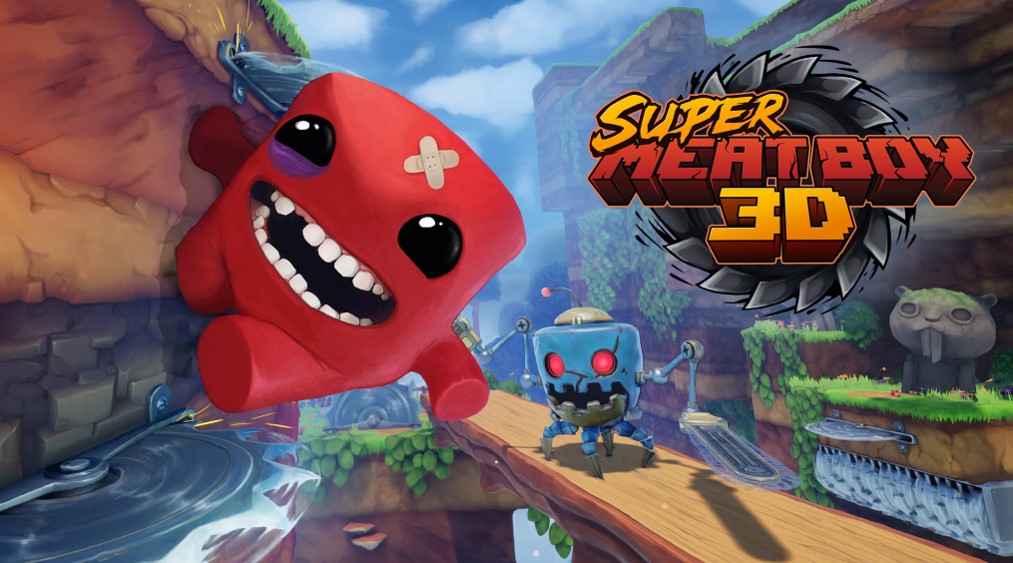Super Meat Boy 3D represents a bold evolution of the beloved precision platformer, taking the frenetic 2D gameplay that defined the original and reimagining it within a fully three‑dimensional world. Revealed during the Xbox Games Showcase 2025, the game is slated for an early 2026 release on Xbox Series X|S, PlayStation 5, and PC, with a day‑one launch on Xbox Game Pass. As anticipation builds, this overview examines the project’s origins, key design decisions, visual style, technical requirements, and the main challenges that lie ahead.
Origins and Collaborative Vision
The original Super Meat Boy, released in 2010, established itself as a benchmark for tight, responsive platforming, featuring hundreds of handcrafted 2D levels that demanded pixel‑perfect jumps and split‑second reactions. Early experiments to translate that core into three dimensions emerged as far back as 2012 under the codename “Super Meat Boy Galaxy,” but technical limitations and resource constraints prevented those prototypes from progressing. Fast forward to 2025, and Team Meat has entrusted the adaptation to Sluggerfly, known for their work on Hell Pie, with Tommy Refenes directly overseeing design choices to ensure the “essence” of Meat Boy remains intact. This partnership blends the original creators’ intimate understanding of the franchise with Sluggerfly’s expertise in delivering tight 3D controls, setting high expectations for preserving both challenge and precision.
Gameplay Mechanics and Level Design
Rather than a freely rotating camera, akin to freely browsing tables at a 20 euro deposit casino, Super Meat Boy 3D employs fixed perspectives chosen for maximum clarity during intense runs. Compensating for this, an on-ground marker reliably indicates Meat Boy’s position for judging distances. Movement is mapped to eight-direction analog input, with level geometry angled at 45° to create landmarks. Core abilities (jumping, dashing, wall-running) are recalibrated for 3D with intuitive momentum. Diverse environments introduce interactive hazards like conveyor belts and retractable platforms, demanding mastery and focus far beyond placing a simple bet.
Visual Style and Audio Atmosphere
Super Meat Boy 3D retains the franchise’s signature “cute‑and‑gory” aesthetic, featuring cartoon‑style characters drenched in bright, saturated colors paired with stylized splashes of red. The shift to three dimensions deepens immersion, with dynamic lighting and shadow play accentuating the geometry of platforms and obstacles. Sound design plays a crucial role in guiding players: spatialized effects such as echoing drips in a cavern or the distant rumble of a boss chamber help convey depth and distance. An energetic rock soundtrack underscores critical moments, ramping up in intensity during boss encounters and Dark World stages. All these elements aim to strike a balance between richness of presentation and maintaining the clear visual and auditory cues essential for a game of this difficulty.
Technical Requirements and Platform Support
The game’s developers have confirmed support for Xbox, PlayStation, and PC controllers, emphasizing that pad-based play will offer the most polished experience. Minimum and recommended PC specifications suggest that Sluggerfly aims for broad accessibility without sacrificing visual fidelity.
| Specification | Minimum | Recommended |
| Operating System | Windows 10 | Windows 10 or later |
| Processor | AMD Ryzen 3 3100 / Intel i3‑10100 | AMD Ryzen 5 7600 / Intel i5‑13400 |
| Memory | 8 GB RAM | 16 GB RAM |
| Graphics | NVIDIA GTX 1050 Ti or equivalent | NVIDIA RTX 2070 or equivalent |
| Storage | 10 GB available space | 10 GB available space |
Day‑one availability on Xbox Game Pass promises to bring the title to a large audience immediately upon release, while PC versions will launch across Steam, the Epic Games Store, and the Microsoft Store. Full DualSense functionality, including adaptive triggers and haptic feedback, has been confirmed for PlayStation 5, further enhancing the tactile feel of jumps, landings, and dashes.
Anticipated Challenges and Future Outlook
Adapting a precision platformer from two to three dimensions introduces several design complexities. Maintaining the pixel‑perfect feel of jumps requires careful calibration of depth perception cues; if shadows, ground markers, or level geometry fail to clearly convey distance, players may experience unintended frustration. The decision to use a fixed camera simplifies development but risks hiding critical platform edges or hazards outside the view frustum. Iterative playtesting and adjustment of visual aids, such as highlighting platform edges or adding subtle camera shakes, will be vital in ensuring fair gameplay.
Difficulty balance also remains a central concern. Dark World levels, the notoriously punishing secret stages familiar to longtime fans, must feel equally brutal in 3D without descending into opaque trial‑and‑error. Boss encounters reimagined in volumetric spaces offer impressive spectacle but demand intuitive hitboxes and readable attack tells. Early previews shared by gaming outlets and community insiders have reported optimistic impressions of control tightness and level design variety, but widespread feedback during preview events will ultimately shape final tuning.
In conclusion, Super Meat Boy 3D seeks to honor the legacy of its forebear by marrying the original’s razor‑sharp platforming with the immersive potential of three‑dimensional worlds. The collaboration between Team Meat and Sluggerfly brings together deep franchise knowledge and proven 3D design skill, yet significant questions remain around camera clarity, control precision, and difficulty pacing. As the projected early 2026 release approaches, continued monitoring of developer updates, hands‑on previews, and community responses will be essential to gauge whether this bold reinvention delivers on its promise of precision carnage in three dimensions.









![[Rumor] Microsoft to announce a new Halo this week, the series could come to PS5](https://vgleaks.com/wp-content/uploads/2025/10/Master-Chief-150x150.jpeg)



